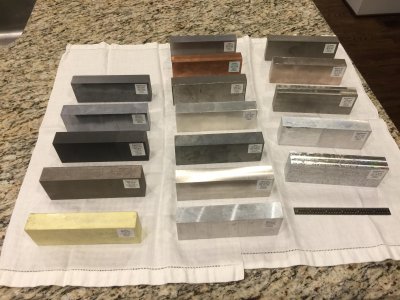I am interested in a 1" x 2" x 6" (or bigger) bar of fairly pure iron. 99.5% would be nice.
Nearly all the iron grades, and steel grades, I see are not this pure.
But I do see that A1003 steel is close to 99.5%.
My local metal supplier cannot get A1003. The obvious online sources do not seem to have 1" thick A1003. Maybe it is not made?
Does anyone know is 1" thick A1003 made? Where can I get it?
Or, is there some other (not expensive) source of 1" thick fairly pure iron?
Oh, and the purpose is pretty trivial--I am an element collector and my "iron sample" is 1018 steel, which is not as pure as I would like--its properties are meaningfully different from actual iron. I mean, that is why we use steel and not iron after all. I do not want to be a material collector. Just an element collector. Yeah, as I said, pretty trivial.
Thanks.
-Bill
Nearly all the iron grades, and steel grades, I see are not this pure.
But I do see that A1003 steel is close to 99.5%.
My local metal supplier cannot get A1003. The obvious online sources do not seem to have 1" thick A1003. Maybe it is not made?
Does anyone know is 1" thick A1003 made? Where can I get it?
Or, is there some other (not expensive) source of 1" thick fairly pure iron?
Oh, and the purpose is pretty trivial--I am an element collector and my "iron sample" is 1018 steel, which is not as pure as I would like--its properties are meaningfully different from actual iron. I mean, that is why we use steel and not iron after all. I do not want to be a material collector. Just an element collector. Yeah, as I said, pretty trivial.
Thanks.
-Bill




